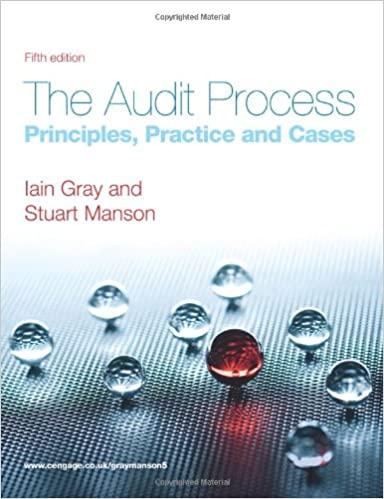Using the Lambert's strategic profit model forms below, calculate the ROA, and the change in ROA from the Base Case for each of the five cases. Refer to the strategic profit model from your notes to figure out how to make the calculations required. Place your answers in the forms below, and upload this document through Canvas before the submission date. Late submissions for this assignment will not be accepted. The Scenario: You work in the SC department of a firm that makes microchips. You are trying to convince your manager that small changes in the way your company handles its logistic and supply chain practices and improve the firm's financial performance. You've decided to postulate five different cases of changes and need to calculate their expected effect on ROA for the firm. The way your firm currently does business is identified in the Base Case below. Each case describes how the firm might change its practices. The Base Case: - Price of microchips: $9.50 - Quantity of Microchips the firm sells at $10 under current logistics practices: 1,200 - Cost of Goods (to produce a microchip): $7.50 - Variable Costs - Transportation: 5% of sales revenue - Handling: 2% of sales revenue - Storage: 2% of sales revenue - Promotions: 3% of sales revenue - Fixed Expenses: $840.00 - Inventory Costs: 25% of Sales revenue - Accounts Receivable: 20% of Sales revenue - Other Current Assets: \$1,000 - Fixed Assets: $6,500 Case 1: Starting from the Base Case, you recommend the firm partner with a smaller number of transportation providers who will provide the same level of service for less money, reducing the cost of transportation from 5% to 4%. Case 2: Starting from the Base Case, you recommend the firm segment its customers and set different payment expectations with Class II-Class V customers, allowing the firm to reduce accounts receivable from 20% of sales to 15% of sales. Case3: Starting from the Base Case, you recommend better logistics operations practices, allowing you to keep less work-in-progress and raw material inventory, reducing Cost of Goods from \$7.50 to $7.25 per unit with no change in service to your customers. Case 4: Starting from the Base Case, you recommend closer relationships with your Class I and Class II customers so you have a better sense of customer demand, allowing you to set higher fill rates for them, increasing quantity sold from 1,200 to 1,400 . The Base Case Case 1: Increase Transportation Efficiency | Change in ROA % Using the Lambert's strategic profit model forms below, calculate the ROA, and the change in ROA from the Base Case for each of the five cases. Refer to the strategic profit model from your notes to figure out how to make the calculations required. Place your answers in the forms below, and upload this document through Canvas before the submission date. Late submissions for this assignment will not be accepted. The Scenario: You work in the SC department of a firm that makes microchips. You are trying to convince your manager that small changes in the way your company handles its logistic and supply chain practices and improve the firm's financial performance. You've decided to postulate five different cases of changes and need to calculate their expected effect on ROA for the firm. The way your firm currently does business is identified in the Base Case below. Each case describes how the firm might change its practices. The Base Case: - Price of microchips: $9.50 - Quantity of Microchips the firm sells at $10 under current logistics practices: 1,200 - Cost of Goods (to produce a microchip): $7.50 - Variable Costs - Transportation: 5% of sales revenue - Handling: 2% of sales revenue - Storage: 2% of sales revenue - Promotions: 3% of sales revenue - Fixed Expenses: $840.00 - Inventory Costs: 25% of Sales revenue - Accounts Receivable: 20% of Sales revenue - Other Current Assets: \$1,000 - Fixed Assets: $6,500 Case 1: Starting from the Base Case, you recommend the firm partner with a smaller number of transportation providers who will provide the same level of service for less money, reducing the cost of transportation from 5% to 4%. Case 2: Starting from the Base Case, you recommend the firm segment its customers and set different payment expectations with Class II-Class V customers, allowing the firm to reduce accounts receivable from 20% of sales to 15% of sales. Case3: Starting from the Base Case, you recommend better logistics operations practices, allowing you to keep less work-in-progress and raw material inventory, reducing Cost of Goods from \$7.50 to $7.25 per unit with no change in service to your customers. Case 4: Starting from the Base Case, you recommend closer relationships with your Class I and Class II customers so you have a better sense of customer demand, allowing you to set higher fill rates for them, increasing quantity sold from 1,200 to 1,400 . The Base Case Case 1: Increase Transportation Efficiency | Change in ROA %









